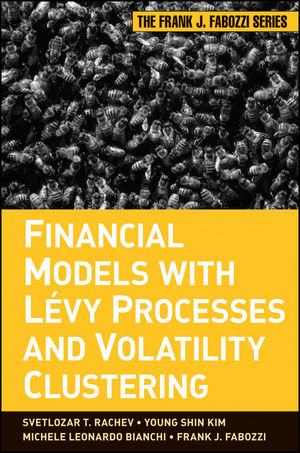Financial Models with Levy Processes and Volatility ClusteringISBN: 978-0-470-48235-3
Hardcover
416 pages
February 2011
 This is a Print-on-Demand title. It will be printed specifically to fill your order. Please allow an additional 10-15 days delivery time. The book is not returnable.
|
||||||
About the Authors.
Chapter 1 Introduction.
1.1 The need for better financial modeling of asset prices.
1.2 The family of stable distribution and its properties.
1.3 Option pricing with volatility clustering.
1.4 Model dependencies.
1.5 Monte Carlo.
1.6 Organization of the book.
Chapter 2 Probability distributions.
2.1 Basic concepts.
2.2 Discrete probability distributions.
2.3 Continuous probability distributions.
2.4 Statistic moments and quantiles.
2.5 Characteristic function.
2.6 Joint probability distributions.
2.7 Summary.
Chapter 3 Stable and tempered stable distributions.
3.1 α-Stable distribution.
3.2 Tempered stable distributions.
3.3 Infinitely divisible distributions.
3.4 Summary.
3.5 Appendix.
Chapter 4 Stochastic Processes in Continuous Time.
4.1 Some preliminaries.
4.2 Poisson Process.
4.3 Pure jump process.
4.4 Brownian motion.
4.5 Time-Changed Brownian motion.
4.6 Lévy process.
4.7 Summary.
Chapter 5 Conditional Expectation and Change of Measure.
5.1 Events, s-fields, and filtration.
5.2 Conditional expectation.
5.3 Change of measures.
5.4 Summary.
Chapter 6 Exponential Lévy Models.
6.1 Exponential Lévy Models.
6.2 Fitting a-stable and tempered stable distributions.
6.3 Illustration: Parameter estimation for tempered stable distributions.
6.4 Summary.
6.5 Appendix : Numerical approximation of probability density and cumulative distribution functions.
Chapter 7 Option Pricing in Exponential Lévy Models.
7.1 Option contract.
7.2 Boundary conditions for the price of an option.
7.3 No-arbitrage pricing and equivalent martingale measure.
7.4 Option pricing under the Black-Scholes model.
7.5 European option pricing under exponential tempered stable Models.
7.6 The subordinated stock price model.
7.7 Summary.
Chapter 8 Simulation.
8.1 Random number generators.
8.2 Simulation techniques for Lévy processes.
8.3 Tempered stable processes.
8.4 Tempered infinitely divisible processes.
8.5 Time-changed Brownian motion.
8.6 Monte Carlo methods.
Chapter 9 Multi-Tail t-distribution.
9.1 Introduction.
9.2 Principal component analysis.
9.3 Estimating parameters.
9.4 Empirical results.
9.5 Conclusion.
Chapter 10 Non-Gaussian portfolio allocation.
10.1 Introduction.
10.2 Multifactor linear model.
10.3 Modeling dependencies.
10.4 Average value-at-risk.
10.5 Optimal portfolios.
10.6 The algorithm.
10.7 An empirical test.
10.8 Summary.
Chapter 11 Normal GARCH models.
11.1 Introduction.
11.2 GARCH dynamics with normal innovation.
11.3 Market estimation.
11.4 Risk-neutral estimation.
11.5 Summary.
Chapter 12 Smoothly truncated stable GARCH models.
12.1 Introduction.
12.2 A Generalized NGARCH Option Pricing Model.
12.3 Empirical Analysis.
12.4 Conclusion.
Chapter 13 Infinitely divisible GARCH models.
13.1 Stock price dynamic.
13.2 Risk-neutral dynamic.
13.3 Non-normal infinitely divisible GARCH.
13.4 Simulate infinitely divisible GARCH.
Chapter 14 Option Pricing with Monte Carlo Methods.
14.1 Introduction.
14.2 Data set.
14.3 Performance of Option Pricing Models.
14.4 Summary.
Chapter 15 American Option Pricing with Monte Carlo Methods.
15.1 American option pricing in discrete time.
15.2 The Least Squares Monte Carlo method.
15.3 LSM method in GARCH option pricing model.
15.4 Empirical illustration.
15.5 Summary.
Index.



